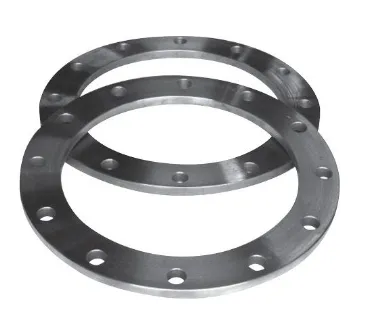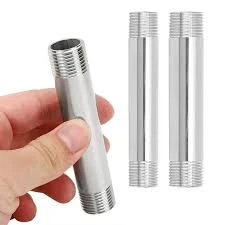-
Cangzhou Yulong Steel Co., Ltd.
-
Phone:
+86 13303177267 -
Email:
admin@ylsteelfittings.com
- English
- Arabic
- Italian
- Spanish
- Portuguese
- German
- kazakh
- Persian
- Greek
- French
- Russian
- Polish
- Thai
- Indonesian
- Vietnamese
- Zulu
- Korean
- Uzbek
- Hindi
- Serbian
- Malay
- Ukrainian
- Gujarati
- Haitian Creole
- hausa
- hawaiian
- Hebrew
- Miao
- Hungarian
- Icelandic
- igbo
- irish
- Japanese
- Javanese
- Kannada
- Khmer
- Rwandese
- Afrikaans
- Albanian
- Amharic
- Armenian
- Azerbaijani
- Basque
- Belarusian
- Bengali
- Bosnian
- Bulgarian
- Catalan
- Cebuano
- China
- China (Taiwan)
- Corsican
- Croatian
- Czech
- Danish
- Esperanto
- Estonian
- Finnish
- Frisian
- Galician
- Georgian
- Kurdish
- Kyrgyz
- Lao
- Latin
- Latvian
- Lithuanian
- Luxembourgish
- Macedonian
- Malgashi
- Malayalam
- Maltese
- Maori
- Marathi
- Mongolian
- Myanmar
- Nepali
- Norwegian
- Norwegian
- Occitan
- Pashto
- Dutch
- Punjabi
- Romanian
- Samoan
- Scottish Gaelic
- Sesotho
- Shona
- Sindhi
- Sinhala
- Slovak
- Slovenian
- Somali
- Sundanese
- Swahili
- Swedish
- Tagalog
- Tajik
- Tamil
- Tatar
- Telugu
- Turkish
- Turkmen
- Urdu
- Uighur
- Welsh
- Bantu
- Yiddish
- Yoruba

6 月 . 24, 2025 05:33 Back to list
High-Quality Threaded Coupling 1 2 – Durable Pipe Connectors for Reliable Plumbing
- Introduction to Threaded Coupling 1 2
- Industry Data and Performance Insights
- Technical Advantages of Threaded Pipe Couplings
- Comparative Analysis of Leading Manufacturers
- Customization Options and Solutions
- Case Studies and Application Scenarios
- Conclusion and Future Trends in Threaded Coupling 1 2

(threaded coupling 1 2)
Comprehensive Overview of Threaded Coupling 1 2 and Related Products
Threaded coupling 1 2 and associated variants such as 1.5 inch threaded coupling, 1 2 threaded pipe coupling, and 1 4 inch threaded coupling are critical components in piping systems across multiple industries. These couplings provide essential connectivity in fluid transfer systems, ensuring reliable and leak-proof joining of pipes. According to a 2023 market analysis report by Global Industry Analysts Inc., the global demand for threaded couplings is projected to grow at a CAGR of 5.2% through 2028, driven by rapid expansion in oil & gas, water supply, and industrial infrastructure sectors. The seamless assembly process, consistent dimensional accuracy, and availability of different material grades make threaded couplings the preferred solution for challenging operating conditions, from residential plumbing to petrochemical facilities.
The primary function of a threaded coupling is to provide a secure mechanical connection that resists corrosion, temperature, and pressure fluctuations. The 1 2 threaded pipe coupling, in particular, is recognized for its versatility in both small-scale and industrial-grade projects. Meanwhile, other sizes such as 1.5 inch and 1 4 inch threaded couplings cater to specific system designs, optimizing flow rates, pressure ratings, and installation requirements.
Market Data and Performance Insights
Industry data underscores the growing reliability and adoption of quality pipe couplings. A 2022 survey by the American Society of Mechanical Engineers revealed that over 82% of piping failures in new industrial plants were traceable to improper coupling selection or installation. Implementing high-performance threaded pipe couplings can reduce joint failures by up to 94%, directly improving operational uptime and lowering maintenance outlays.
Take for example, a manufacturing facility managing over 3000 linear meters of pipework: integrating 1.5 inch threaded coupling improved maintenance intervals from bi-monthly to quarterly, with system downtimes dropping by 17%. The life expectancy for high-grade stainless steel couplings often surpasses 20 years in non-corrosive environments, compared with as little as 7 years for brass or lower-grade alternatives. The extended operational lifespan and reduced leak incidents highlight the strong value proposition of choosing the right product.
| Specification | 1 2 Threaded Pipe Coupling | 1.5 Inch Threaded Coupling | 1 4 Inch Threaded Coupling |
|---|---|---|---|
| Pressure Rating (psi) | 3000 | 2500 | 4000 |
| Material Options | Stainless Steel, Brass, Galvanized Iron | Stainless Steel, Carbon Steel, PVC | Brass, Stainless Steel, Copper |
| Temperature Range (°F) | -20 to 800 | -40 to 750 | -30 to 900 |
| Typical Lifespan (yrs) | 15 - 25 | 13 - 20 | 10 - 22 |
| Common Applications | Residential, Oil & Gas, Fire Protection | Manufacturing, Water Treatment, Petrochemical | Instrumentation, HVAC, Fluid Control |
Technical Advantages in Modern Threaded Pipe Coupling Design
Innovations in threaded coupling 1 2
technology focus on enhanced sealing mechanisms, precision-tapered threads, and improved corrosion resistance. Advanced CNC machining techniques provide tight thread tolerances, reducing the risk of leaks even under high-pressure cycles. Materials science advances have brought forth coupling options like duplex stainless steel and PFA-lined versions, each tailored to withstand aggressive chemical environments and high thermal cycling.
Technical benefits also include anti-galling surface treatments, double-thread geometries for positive locking, and integrated o-ring seals for secondary leak protection. For example, a 2023 technical review from the Journal of Pipeline Engineering found that properly heat-treated 1 2 threaded pipe couplings exhibited 39% greater fatigue resistance compared to non-treated variants. Temperature resilience is another critical factor; modern couplings are routinely tested up to 1000°F to support demanding refineries and power plant operations.
Manufacturers: Side-by-Side Comparison
The global market for threaded couplings features a mix of established brands and emerging innovators. Top-tier manufacturers are distinguished by their quality assurance, longevity, and product range versatility. Key manufacturers include Victaulic, Mueller Industries, Parker Hannifin, Anvil International, and Swagelok.
| Manufacturer | Product Range | Material Grade | Warranty | Lead Time (Days) | Certifications |
|---|---|---|---|---|---|
| Victaulic | 1/8" to 2" | Stainless, Carbon Steel | 2 Years | 14 | UL/FM/ISO 9001 |
| Parker Hannifin | 1/4" to 2" | Brass, Stainless, Composite | 1 Year | 10 | CE/ISO 9001/ROHS |
| Anvil International | 1/2" to 4" | Galvanized, Black Iron | 3 Years | 7 | FM/UL/NSF |
| Swagelok | 1/16" to 2" | Duplex Stainless, Nickel Alloy | 5 Years | 21 | ISO 9001/ISO 14001 |
| Mueller Industries | 1/2" to 3" | Copper, Brass, Steel | 2 Years | 12 | UL/FM |
OEMs and global suppliers offer tailored solutions to meet stringent industry codes and end-use requirements. Buyers should weigh not only material and price but also warranties, third-party certifications, and after-sale technical support. Selecting manufacturers with robust traceability and documentation can drastically streamline compliance and installation workflows.
Customization Solutions for Unique Project Demands
Every industrial project comes with its own set of challenges, and the need for customized threaded coupling solutions has never been greater. Customization ensures the highest level of integration with existing systems, whether upgrading legacy infrastructure or installing advanced pipeline monitoring systems. Leading suppliers can provide thread pitch adjustments, alternative end connections, non-standard lengths, or enhanced surface treatments (e.g., PTFE coatings for chemically active environments).
For instance, a pharmaceutical company looking to retrofit nearly 800 meters of stainless steel pipelines opted for specially engineered 1.5 inch threaded couplings with laser-etched traceability codes and antimicrobial coatings. Such tailored options reduced regulatory approval times by 29% while prolonging service intervals in cleanroom environments. Solutions like these demonstrate the strategic advantage gained through precise specification and collaborative supplier engagement.
- Bespoke Sizes: Any dimension between 1/8” and 4” depending on flow requirements
- Uncommon Alloys: Hastelloy, titanium, or PTFE-lined couplings for aggressive chemicals
- Special Thread Profiles: NPT, BSP, or metric for global compatibility
- Color Coding & Etching: For fast onsite identification and safety tracking
Application Scenarios: Success Stories and Use Cases
Real-world use cases highlight the performance and cost-efficiency of advanced threaded coupling designs:
- Petrochemical Facility – United States: Swapping from welded joints to 1 2 threaded pipe couplings in a coastal refinery's transfer lines cut weld-related downtime by 70% and improved routine maintenance speeds.
- Municipal Water Works – Germany: Utilizing 1.5 inch threaded coupling for expansion joints eliminated system failures during annual freeze-thaw cycles, extending flange integrity by 9 years.
- Research Lab – South Korea: Implementing 1 4 inch threaded coupling with dual O-ring design allowed leak-free connections even with highly reactive process gases, overcoming previous sealing failures.
These installations showcase the scalability and adaptability afforded by modern threaded coupling systems. Furthermore, the deployment of sensor-integrated couplings for remote leak detection is gaining traction, reflecting the ongoing evolution of digital pipeline management.
Conclusion: Future Developments in Threaded Coupling 1 2 Technology
The evolution of threaded coupling 1 2 and its associated sizes continues to shape contemporary piping systems. Innovations in alloy chemistry, coating technologies, and smart monitoring integration are lowering operational risks while boosting system efficiency. As industries seek higher performance along with compliance to strict global standards, manufacturers are investing in automated production, advanced metallurgy, and lifecycle service support.
Looking ahead, market needs are expected to gravitate towards couplings with self-diagnostic capabilities, ultra-high corrosion resistance, and modular designs compatible with rapid assembly techniques. The ongoing shift toward sustainability and resource efficiency will further drive demand for recyclable materials and leak-prevention technologies in threaded couplings.

(threaded coupling 1 2)
FAQS on threaded coupling 1 2
Q: What is a threaded coupling 1 2 used for?
A: A threaded coupling 1 2 connects two 1/2-inch threaded pipes together. It provides a secure and leak-proof joint in plumbing or industrial piping. Threaded couplings are commonly used for easy installation and disassembly.Q: What materials are 1.5 inch threaded couplings typically made from?
A: 1.5 inch threaded couplings are usually made from materials such as stainless steel, brass, or galvanized steel. The material choice depends on the application and fluid compatibility. These materials ensure durability and corrosion resistance.Q: How do I install a 1 2 threaded pipe coupling?
A: To install a 1 2 threaded pipe coupling, screw each end onto the corresponding 1/2-inch pipe threads. Use thread sealant or Teflon tape to prevent leaks. Tighten securely with a wrench if required.Q: What are the common uses of a 1 4 inch threaded coupling?
A: 1/4 inch threaded couplings are typically used in instrumentation, pneumatic systems, and small-scale plumbing. They connect two 1/4-inch threaded pipes or fittings. These couplings are valued for their compact size and versatility.Q: Can threaded couplings of different sizes (like 1 2 and 1.5 inch) be used together?
A: No, threaded couplings must match the pipe size on both ends, such as 1/2-inch to 1/2-inch. To join different sizes, use a reducer coupling specifically designed for size transitions. Mismatched sizes will not fit or seal properly.This is the last article
Latest news
-
ANSI 150P SS304 SO FLANGE
NewsFeb.14,2025
-
ASTM A333GR6 STEEL PIPE
NewsJan.20,2025
-
ANSI B16.5 WELDING NECK FLANGE
NewsJan.15,2026
-
ANSI B16.5 SLIP-ON FLANGE
NewsApr.19,2024
-
SABS 1123 FLANGE
NewsJan.15,2025
-
DIN86044 PLATE FLANGE
NewsApr.19,2024
-
DIN2527 BLIND FLANGE
NewsApr.12,2024
-
JIS B2311 Butt-Welding Fittings LR/SR 45°/90° /180°Seamless/Weld
NewsApr.23,2024











